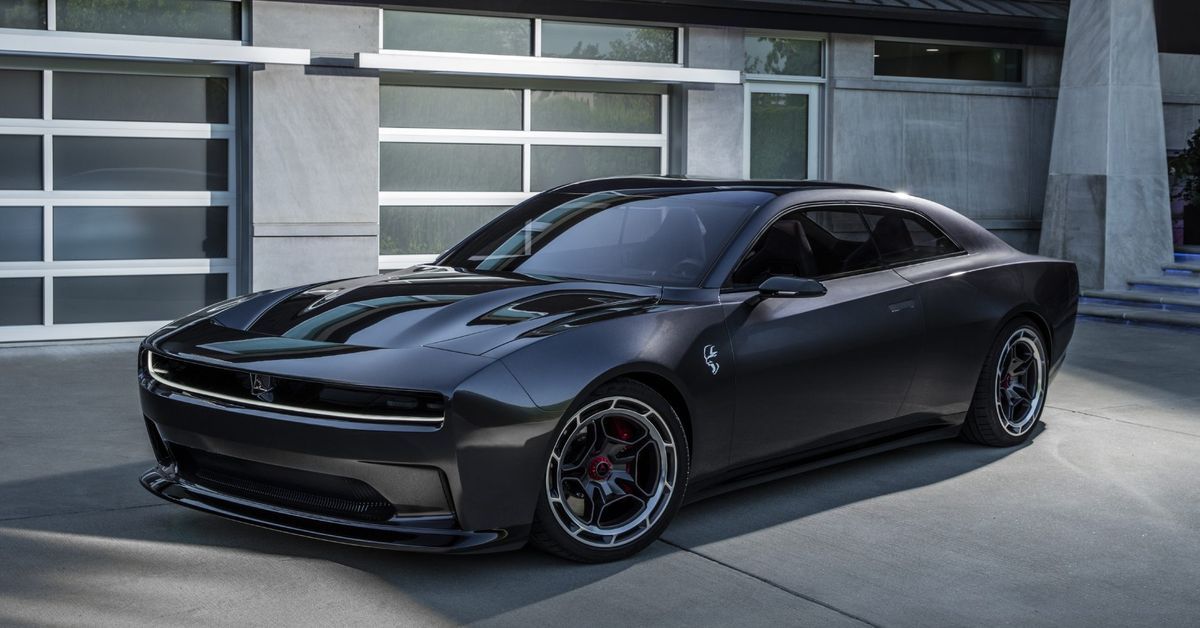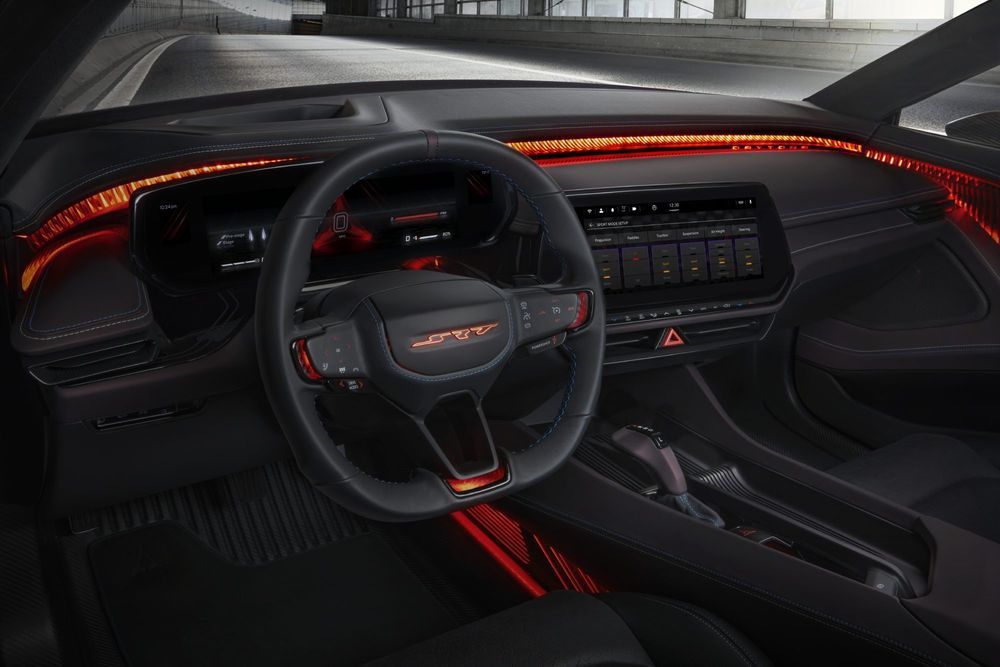The new Dodge Charger Daytona SRT Concept shatters preconceptions about electric vehicles (EV) and is one of the best re-imaginings of a muscle car into an EV model that we have ever seen. Staying true to the power and even the sounds that Dodge has been known for, the newest design for the potential 2024 Dodge Charger unveiled at the M1 Concourse in Pontiac, Michigan is an absolute stunner.
Equipped with a new propulsion system and performance that outdoes even the famous SRT Hellcat engine, the future of EVs is looking brighter than ever thanks to Dodge. The Charger SRT Concept stays true to design heritage but does not fall short on updated technology or innovation. The interior includes elements that create an immersive experience, and the car boasts the industry’s first BEV exhaust sound.
Let’s take a closer look at how the Dodge Charger Daytona SRT Concept EV is making the future of EVs brighter!
Specifications Of The Dodge Daytona SRT Concept
After a recent confirmation that both the Dodge Charter and Challenger will no longer be produced in ICE form, and immediately after introducing the new Hornet SUV, Dodge previewed the new Charger Daytona SRT Concept with claims that “Performance made us do it.” Considering the powerful lineage of the Charger name, it was surprising to hear that their new EV lived up to the branding.
Unlike many of the competitors (such as the Mustang Mach-E or Tesla models) the concept from Dodge is not direct-drive. Rather, it has an eRupt multi-speed transmission which allows for distinctive shifting points making the electro-mechanical shifting experience a more immersive and dynamic one that feels a lot more like a traditional shift.
The famed Charger Daytona model known for being the first to break 200 MPH on a NASCAR track back in 1970 comes through in the new EV Concept’s name and performance. The new propulsion system pushing the Charger Daytona SRT is an 800V Banshee one that makes the EV quicker in all key arenas than even the beloved Hellcat was.
Performance has also been improved thanks to an all-wheel drive system that makes the EV better in all-weather capabilities. A push-to-pass feature has also been added in the form of PowerShot, which is activated by a button on the steering wheel and allows for an increased burst of acceleration.
Also available at the press of a button are several driving modes that allow for customization of driving dynamics, HUD content, instrument cluster information, interior lighting features, and performance sound. Speaking of sound, the Charger EV delivers on that as well, with a new patent pending Fratzonic Chambered Exhaust system.
While all other fully electric vehicles have eliminated the exhaust, Dodge saw fit to add it back in. However, rather than serving as an emission's outtake, the exhaust on the Charger EV is there for sound purposes. Through an amplifier and tuning chamber located at the rear of the car, the exhaust provides “tactile, bone-shaking, muscle attitude” according to Dodge. The sound is then further amplified by pairing with the eRupt transmission to create an amazing and familiar feeling unique to Dodge.
Some Amazing Features And Designs On The Daytona SRT Concept
The design of the Charger SRT Concept does some heavy nodding to its heritage by maintaining the same overall shape of its ICE predecessors. With updated technology and futuristic design touches, though, the Concept gives new life to a recognizable legacy. In the front-end, the Daytona SRT Concept has another patent pending addition in the R-Wing, which gives a more aerodynamic profile to the vehicle.
The R-Wing again nods to the original Charger Daytona design, but also serves functionally to allow increased air flow through the front to increase downforce on the car. Additional carbon fiber intakes located at both sides of the front and rear lower fascia continue the theme of aerodynamic efficiency by providing an air curtain, according to Dodge.
The front grille is a bit more futuristic with cross-car lighting with a central Fratzog badging (something teased by Dodge last year). The badging was originally featured on 1962-1976 models from the maker and now represents Dodges future and commitment to performance heritage incorporated with updated technology.
Keeping a minimalist profile overall, the Concept has flush door handles and simple details such as the vertical lines on the front grille and hidden headlights located beneath the R-Wing and following the lines of the car’s body. The minimalist approach is continued on the interior of the car, where the cockpit is driver-centric and includes many tech-updates.
A 12.3-inch screen is centered on the dash (it is the largest featured in a Dodge) and it can be angled towards the driver. The 16-inch instrument cluster curves and the HUD makes it easy for the driver to access important vehicle information. The instrument panel is slim and located up a bit higher on the dashboard, placing it above the cluster.
With plentiful sporty touches such as a carbon fiber floor, adjustable lighting, carbon fiber door sills with Daytona lettering, a center console with a cap that flips up to reveal the start button, and a unique pistol-grip shifter, the overall design of the Concept is appealing. The devotion shown to performance as well as design is also impressive. The Dodge Daytona SRT Concept offerings have us excited about the future of EVs, which now promises to hold a more familiar and immersive driving experience.


